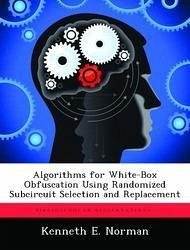Software protection remains an active research area with the goal of preventing adversarial software exploitation such as reverse engineering, tampering, and piracy. Heuristic obfuscation techniques lack strong theoretical underpinnings while current theoretical research highlights the impossibility of creating general, e cient, and information theoretically secure obfuscators. In this research, we consider a bridge between these two worlds by examining obfuscators based on the Random Program Model (RPM). Such a model envisions the use of program encryption techniques which change the black-box (semantic) and white-box (structural) representations of underlying programs. In this thesis we explore the possibilities for white-box transformation. Under an RPM formulation, if an adversary cannot distinguish an original program from either its obfuscated version (whose black-box behavior has been strategically altered) or a randomly generated program of comparable size, then the white-box intent of the original program has been su ciently protected.
Bitte wählen Sie Ihr Anliegen aus.
Rechnungen
Retourenschein anfordern
Bestellstatus
Storno









